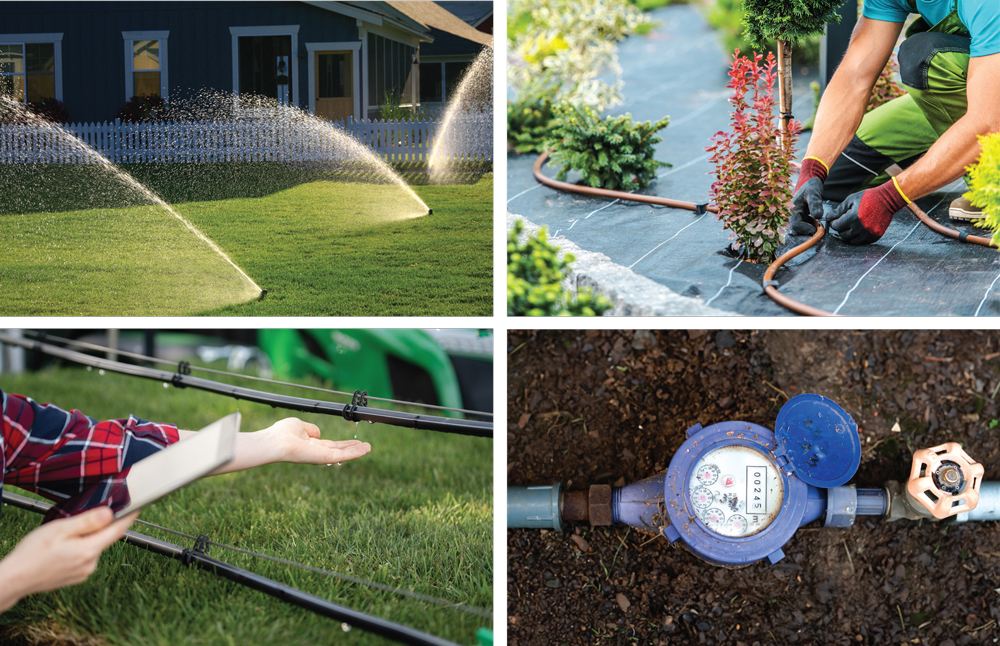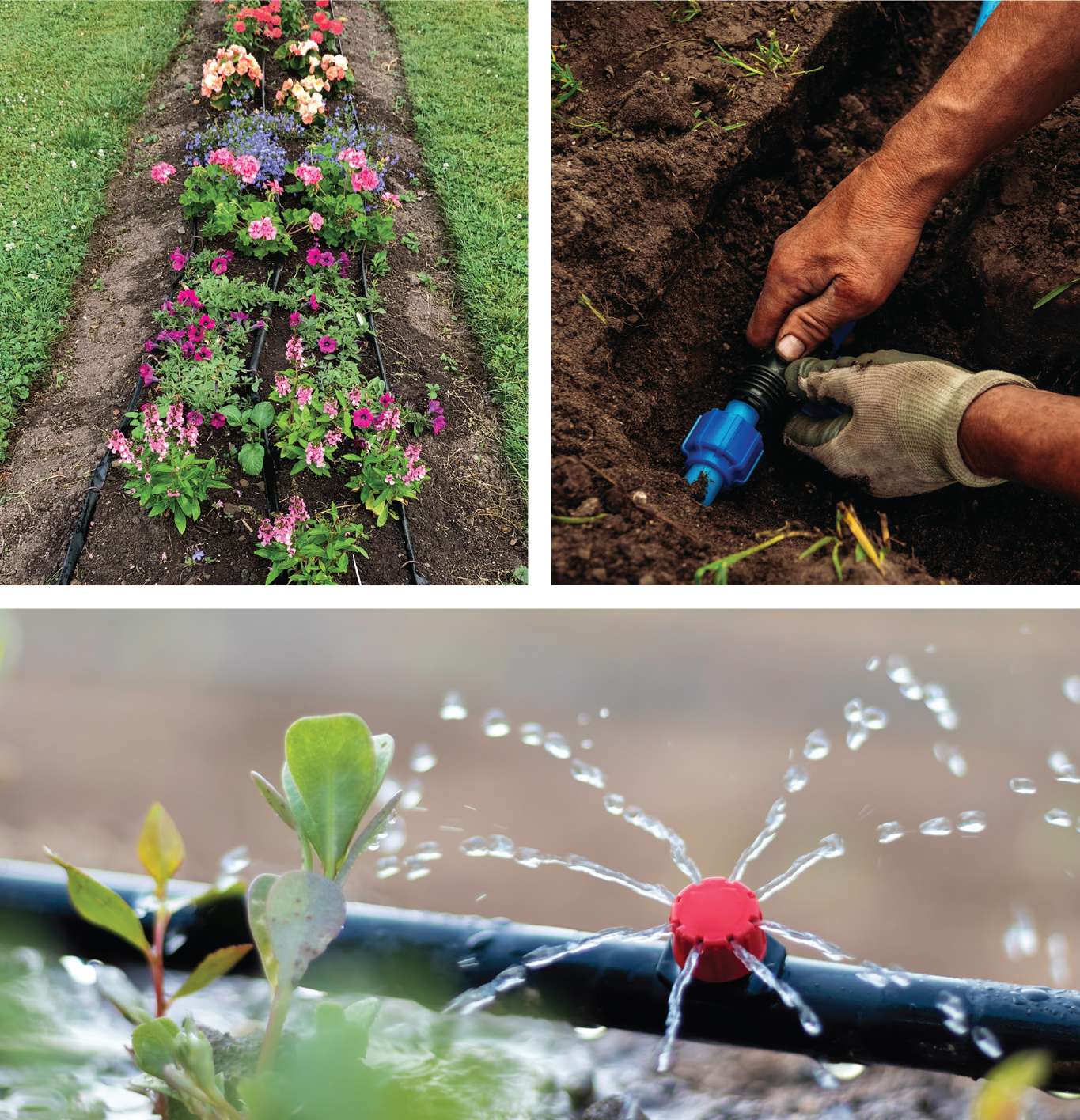WATER WISE

Help Your Landscape Thrive this Summer with a Home Irrigation System
The summer months paired with a dose of global warming have many of us thinking about how to keep our lawns and gardens healthy and hydrated. It can be difficult to keep up with watering as well as know exactly how much water is necessary for grass and plants. A sure way to achieve lush landscapes, and even increase property value, is through efficient home irrigation systems.
‘Smart’ systems
While irrigation has been around for ages, it has definitely come a long way.
Jorge Martinez, irrigation specialist at Roanoke Landscapes, says they typically install systems with a “smart” controller that senses when your lawn has already been watered by natural sources and therefore would not run unnecessarily. Rain sensors can also be added on, which use national weather survey data to “sense” when rain is coming so your system never over-waters your lawn.
“It’s exciting stuff,” Martinez says. “These systems are only getting smarter, and clients want to ensure their system is water-conscious. This seems to be the ticket for most homeowners right now.”
Choosing a system
There are several factors that determine if a property is suitable for an irrigation system – landscape size, soil type, plant types, homeowner preferences and of course budget – but if you’re seeing brown patches of grass or erosion along hillsides, your home is likely a great candidate for an irrigation system.
Different types of systems include drip irrigation, sprinkler systems and soaker hoses.
“Drip irrigation is more efficient and suitable for watering individual plants,” Martinez says. “Sprinkler systems are more suitable for larger areas like turf but can be less efficient without the latest smart controllers. Soaker hoses are simple and cost-effective, but may require more maintenance.”
Installing a system
For Roanoke Landscapes, the installation process involves planning the system layout and measuring by zones. A typical irrigation system is usually no larger than six zones. A “ditch witch” is used to tastefully install the pipes and sprinklers in ground without disrupting the landscape. After installing the pipes and sprinkler heads, the system is connected to a water source and set up on a controller, which will run automatically. Installers also remediate any disturbances caused on the property.
While many homeowners use county or city water, it is possible to collect your own rainwater for your system. However, it can be tricky to obtain enough gallons to properly run the system, especially in a dry season.
“If your home has a pond or lake on your property, you can pull from there instead of from a municipal supply,” Martinez says. “We also have clients in Roanoke and Salem that collect rainwater and divert it into a tank that their irrigation systems will draw from before utilizing municipal resources. Additionally, irrigation systems can utilize well water, as long as your well has the capacity.”
The water usage of an irrigation system depends on multiple factors such as the size of the landscape and personal preference, but installing one can actually conserve water.
“If a normal water bill was around $150 per month, you might be looking at $40 to $50 more per month,” Martinez says. “However, on average, homeowners can expect to use about 30 to 50 percent less water compared to manual watering methods. The most common misconception is homeowners thinking they need to water more than twice per week, but best practice is less often but a deeper water.”
According to Roanoke Landscapes, an irrigation install usually takes about one week. The cost varies widely depending on property size and layout, but a ½-acre job on a normal residential property would be about $8,000 to $10,000.
Maintaining your system
Irrigation systems are constructed from durable materials and designed to withstand the test of time. But, as with any system, they do require yearly maintenance. In Virginia’s climate, irrigation systems typically operate for six months – April through October. This means units must be winterized as well as turned back on in the spring.
“During spring startup, our irrigation technicians visit properties to check systems and identify necessary repairs,” Martinez says. “This includes checking for leaks, adjusting sprinkler heads, cleaning filters and ensuring the controller is programmed correctly. Then, as cooler weather approaches in the fall, it’s essential to shut down the system and clear it out with a compressor to prevent water from freezing in the lines or heads, which could lead to leaks or cracks.”
Operating an irrigation system in the cities of Salem or Roanoke requires a yearly backflow permit, and Roanoke Landscapes will assist with verifying its compliance and completing the necessary paperwork. The yearly permit fee for the cities of Roanoke and Salem is around $150.
An irrigation system is an investment, but can yield green returns year after year! ✦
‘smart’ systems, “smart” controller, Drip irrigation, home irrigation system, irrigation, lush landscapes, rain sensors, sprinkler systems and soaker hoses








